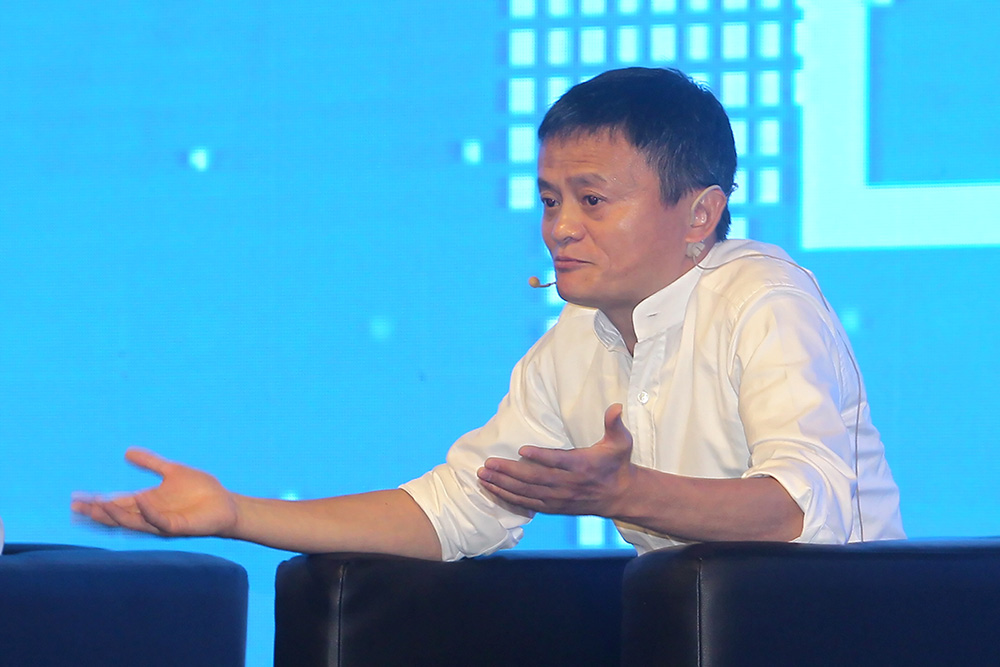
Following China’s growing importance in the international economic system as well as its tighter integration with Southeast Asia, policymakers within the region have seen it fit to court foreign direct investment (FDI) more aggressively from the former. The appeal of Chinese FDI comes amidst a period when industrial progress has stagnated in several Southeast Asian economies, raising specters of a middle-income trap (MIT). 1 On this issue, Malaysia’s experience sheds useful insights. Leveraging longstanding ties with China, the Southeast Asian nation has sought to advance bilateral economic cooperation. In particular, then Prime Minister Najib Razak (2009 to 2018) expended significant effort and attention in attracting Chinese transnational corporations (TNCs). The Najib administration is viewed as one which has grown increasingly reliant on Chinese TNCs to pursue ambitious undertakings with a longer-than-normal payback period. 2 Indeed, some of the most prominent Chinese projects initiated during the Najib era – and continued by successive Prime Ministers – include the East Coast Rail Link (ECRL), Malaysia-China Kuantan Industrial Park (MCKIP), and Bandar Malaysia. 3
In promoting the digital economy, of which platformization is a key component, the Malaysians selected Alibaba as their collaborator. Arguably the most dynamic Chinese TNC that has emerged on the global arena in recent years, the Chinese TNC is involved in the Digital Free Trade Zone (DFTZ). This is a much-touted public-private partnership (PPP) involving anchor firms from both China and Malaysia. Located in Sepang, Selangor, this project is envisioned as a catalyst to promote Malaysia’s digital transformation. The technological and knowledge transfer brought in by Alibaba is expected to nudge Malaysian firms away from activities that compete mainly on cheap labor towards more sophisticated ones that yield more value-added, thereby pushing the nation out of the MIT. In theory at least, the DFTZ should be a success in upgrading Malaysia’s technological and innovation capabilities. Nevertheless, is this really the case or does reality play out differently? This is the main question explored here.
DFTZ Goes Live 2017. Promotional launch video.
A reality check on the digital free trade zone
How has the DFTZ interacted with the development trajectory of the Malaysian industrial ecosystem then? This project dates back to at least October 2016, when Najib announced the setting up of a DFTZ in his Budget 2017 speech. Within the space of a few weeks, Najib appointed Jack Ma, Alibaba’s charismatic founder, as the government’s digital economy advisor. 4 Although Ma is expected to assist Malaysia in the packaging of e-economy in the implementation of, among others, e-payment, Alipay, online banking, and e-financing, one of the clearest manifestations to date is the DFTZ. 5 This project was launched in March 2017, with Alibaba swooping in merely months after the Malaysian government’s overtures.
Alibaba’s imprint is salient when one considers the business model of the DFTZ. Its value proposition lies in the DFTZ being a dedicated zone whereby the whole range of services which is needed to ensure the speedy delivery of goods is scheduled to be made available over a staggered timeline. This zone is the first of Alibaba’s Internet-based trading platform or electronic World Trade Platform (e-WTP). Supplementing the eServices Platform are a physical eFulfilment hub and a satellite services hub, which are being developed over two phases with the first phase undertaken by Pos Malaysia (a Malaysian SOE) at a cost of MYR60 million. 6 The budget is used to upgrade the former Low-Cost Carrier Terminal (LCCT) for the DFTZ’s facilities, which have been operational since at least 2019. Little is known about the project’s second phase. However, Alibaba is understood to continue playing a major role, taking on a 70% equity stake. The remaining 30% is held by Malaysia Airports Holdings Berhad (MAHB), another SOE.

The information revealed thus far indicates two key observations. Firstly, this project seems to be operating in an almost enclave-like environment, with only modest amount of engagement with the wider industrial milieu. In addition to its relative isolation (about one and a half hours) from the commercial hub that is Kuala Lumpur, it is uncertain how much technology transfer the Malaysians have received from the DFTZ. Some inferences can, however, still be made. For example, the project is envisioned to harness the entrepreneurial energy of the small and medium enterprises (SMEs). In encouraging them to participate in the DFTZ, the hope is that Malaysia’s fledgling e-commerce could be stimulated, at least according to the Malaysian International Trade and Industry (MITI). 7 Prima facie analysis indicates that, through the DFTZ, 13,000 local SMEs have gained access to regional and global e-commerce markets at the end of 2019. Their numbers have expanded exponentially from a mere 2,000 at the end of 2017. 8
However, these figures appear to hide more than they reveal. Tham and Kam 9 raise two concerns – there is virtually no distinguishability between SMEs that are new on e-commerce platforms from seasoned SMEs that have used e-commerce channels prior to the establishment of the DFTZ; and no information on the attrition rate of the SMEs that have been listed on the e-commerce platforms in the DFTZ is available. The point is, until more information is made available, it is probably more prudent to adopt a skeptical (or at least, a cautiously optimistic) outlook.
Secondly, the ‘enclave effect’ is also observed in terms of capital ownership. The DFTZ, at its core, is a partnership involving Malaysia’s cohort of SOEs (Pos Malaysia and MAHB) and a technology-intensive foreign TNC (Alibaba). This collaboration is not alien to analysts familiar with Malaysia’s industrialization process. FDI has traditionally been courted to plug the nation’s technological backwardness. Nowhere is this more obvious than the nation’s electrical and electronics hub of Penang. Malaysian reliance of FDI was amplified further during the 1980s, when it pursued heavy industrialization aggressively. To this end, the government saw it fit to directly mobilize SOEs which plugged their technological backwardness by establishing joint ventures with foreign TNCs. 10 Notwithstanding their financial outlay, one of the most challenging issues for the SOEs to untangle has been how licensing and other technical-cum-managerial requirement have been kept out of their reach. This essentially translates to a division of labor where the Malaysian SOEs take charge of non-technical issues (such as regulation and marketing) while foreign investors dictate more technical aspects of the ventures (such as inputs, factory design, and manufacturing workflow). The lack of such autonomy has in turned discouraged and/or pre-empted Malaysian stakeholders from developing more sustainable forms of organic capabilities (such as striving for higher product standards in more advanced markets).
As of the contemporary period, many of these firms have left their respective industries. Malaysian presence (such as global market share) in these heavy industries has also been inconsequential. Relatedly, several studies indicate that Malaysia’s reliance on foreign direct investment and domestic SOEs to propel upgrading has coincided with a relative neglect of its private sector and other microeconomic factors (e.g. skills formation and a level playing field for all enterprises). 11 These issues have to be addressed so that Malaysian firms can progressively climb the technological ladder and capture more value from the production and sales of increasingly complex goods and services, thereby beating the ‘middle income trap’. 12

Conclusion
In conclusion, governments and organizations are increasingly utilizing platforms as means for digital transformation. The DFTZ is an example of how platformization is applied with supposedly ambitious ideals of accelerating Malaysia’s transition towards a digital economy. However, the DFTZ has thus far had minimal engagement with other stakeholders within the wider economy. Various stakeholders often have competing expectations, which the DFTZ will need to address in its business model by reframing its value propositions. 13 Furthermore, the lack of direct capital ownership by local SOEs or non-SOE firms in the DFTZ reduces actual transfers of technical expertise pertinent to upgrading the Malaysian economy.
Policymakers should consider whether a large-scale PPP like the DFTZ is the best approach to upgrade the Malaysian economy, especially when the much-needed technology transfer aspect is missing. Instead, they could consider alternative governance forms such as an ecosystem approach. An ecosystem approach provides the structure for the involvement of transnational anchor firms with SOEs acting as supporting actors. This approach also allows for the inclusion of more diverse stakeholders in value creation, with an explicit focus on technology and knowledge exchanges between the anchor firms, supporting actors and stakeholders. Hence, for platformization to fulfill its goal of true digital transformation at an urban, regional and national level, a fresh, systemic approach is needed.
Guanie Lim
National Graduate Institute for Policy Studies, Japan
Yat Ming Ooi
University of Auckland, New Zealand
Notes:
- Ohno K, The Middle Income Trap: Implications for Industrialization Strategies in East Asia and Africa (National Graduate Institute of Policy Studies 2009) ↩
- Gomez ET et, China in Malaysia: State-Business Relations and the New Order of Investment Flows (1st 2020 edition edn, Palgrave Macmillan 2020) ↩
- Liu H and Lim G, ‘The political economy of a rising China in Southeast Asia: Malaysia’s response to the belt and road initiative’ (2019) Journal of Contemporary China, 28:116, 216-231; Camba A, Lim G and Gallagher K, ‘Leading sector and dual economy: how Indonesia and Malaysia mobilised Chinese capital in mineral processing’ (2022) Third World Quarterly,43:10, 2375-2395 ↩
- Ho WF, ‘Najib: Alibaba founder Jack Ma agrees to be advisor to Malaysian Govt on digital economy’ (2016) The Star ↩
- Bernama, ‘Jack Ma can help spearhead Malaysia’s digital economy – PM Najib’ (2016) ↩
- Tham SY and Yi AKJ, Exploring the Trade Potential of the DFTZ for Malaysian SMEs (ISEAS–Yusof Ishak Institute 2019) ↩
- Ee AN, ‘Govt wants more SMEs in Digital Free Trade Zone’ (2018) www.thesundaily.my ↩
- Chin M-Y and others, Digital Free Trade Zone in Facilitating Small Medium Enterprises for Globalization: A Perspective from Malaysia SMEs (2021) ↩
- Tham SY and Kam AJY, ‘Re-examining the Impact of ACFTA on ASEAN’s Exports of Manufactured Goods to China’ (2014) Asian Economic Papers 63-82 ↩
- Hasan H and Jomo KS, ‘Rent-Seeking and Industrial Policy in Malaysia’ in Jomo KS (ed), Malaysian Industrial Policy (NUS Press 2007) ↩
- Menon J, ‘Growth without Private Investment: What Happened in Malaysia and Can it be Fixed?’ (2014) 19 Journal of the Asia Pacific Economy 247-271; Gomez ET, Cheong KC and Wong C-Y, ‘Regime Changes, State-Business Ties and Remaining in the Middle-Income Trap: The Case of Malaysia’ (2021), Journal of Contemporary Asia, 51:5, 782-802 ↩
- Wang H and Lim G, ‘Catching-up in the semiconductor industry: Comparing the Chinese and Malaysian experience’ (2021), Asian Journal of Technology Innovation, DOI: 10.1080/19761597.2021.2007144 ↩
- Ooi YM and Husted K, ‘Framing multi-stakeholder value propositions: A wicked problem lens’ (2021), Technology Innovation Management Review, 11:4, 26-37 ↩
